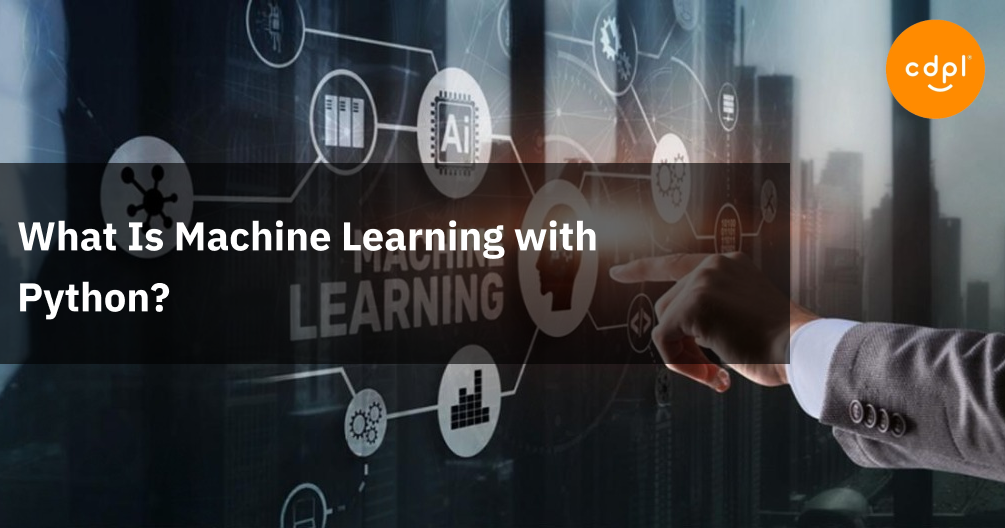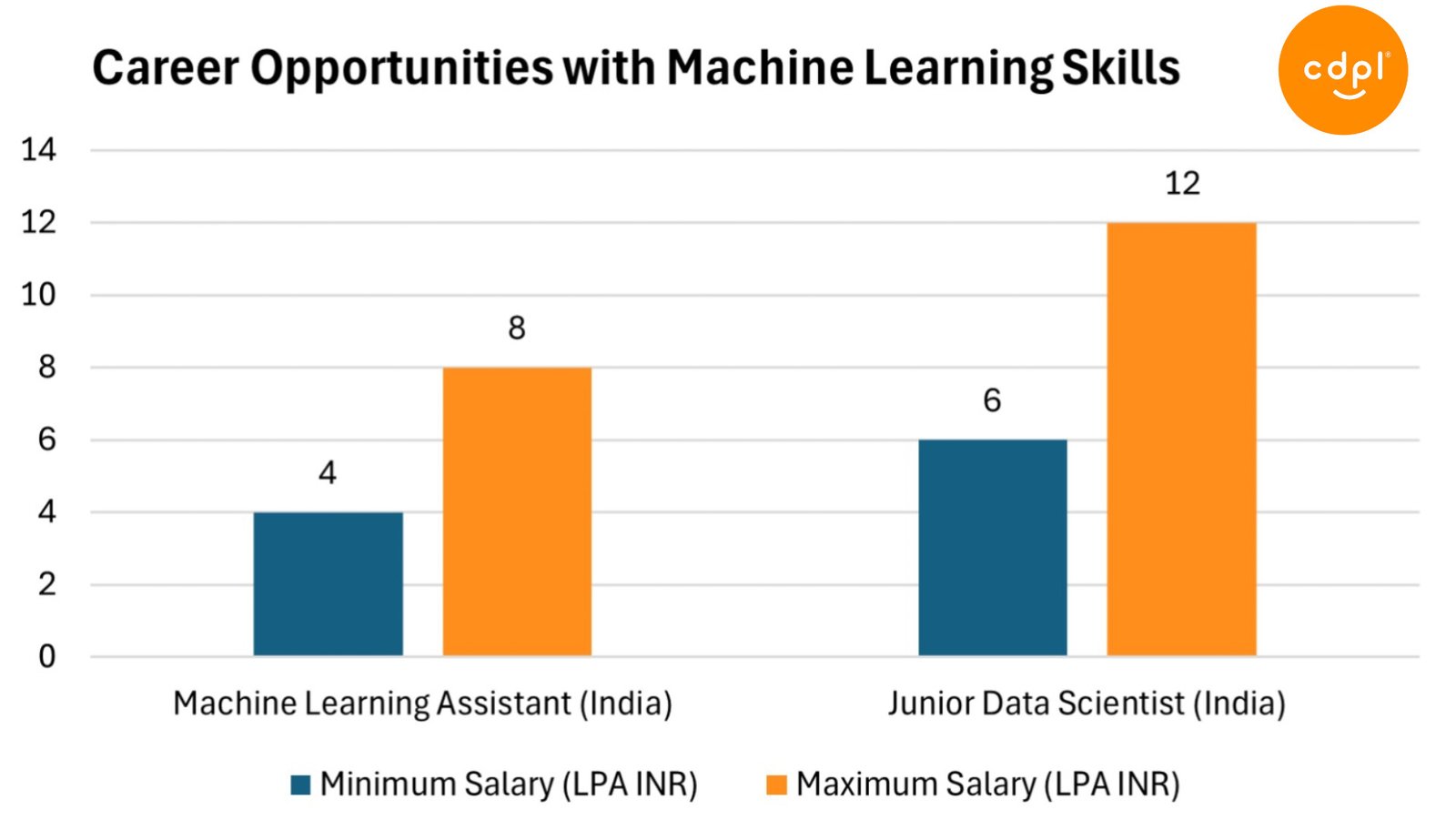The data science landscape in 2025 is evolving faster than ever, and Machine Learning is at its core. For beginners, including commerce students, recent graduates, and career switchers, learning machine learning with Python is the smartest way to break into this dynamic field. Python’s simple syntax and powerful libraries make it the perfect language for building predictive models, even if you’re new to coding. This guide from Cinute Digital covers everything you need: what machine learning is, why it matters, essential concepts, practical steps, and the best tools for your journey.
Explore foundational concepts in our Complete Guide to Data Science Career & Skills
Table of Contents
- What Is Machine Learning with Python?
- Why Machine Learning with Python Matters in 2025
- Essential Concepts for Beginners
- Analogy: Machine Learning as Your Data Chef
- Real-World Examples of Machine Learning Success
- Step-by-Step Guide to Getting Started with Python
- Tools and Libraries for Machine Learning
- Best Data Visualization Tools to Use with Python in 2025
- Career Opportunities with Machine Learning Skills
- Overcoming Common Challenges
- FAQs
- Conclusion
What Is Machine Learning with Python?
 Machine learning with Python means using Python’s user-friendly language and libraries to build models that learn from data and make predictions. For beginners, this typically involves:
Machine learning with Python means using Python’s user-friendly language and libraries to build models that learn from data and make predictions. For beginners, this typically involves:
- Supervised Learning: Training models with labeled data, e.g., predicting sales from past data.
- Unsupervised Learning: Discovering patterns in unlabeled data, e.g., grouping customers by purchasing behavior.
- Python’s Role: Its readable syntax and vast ecosystem, like scikit-learn and pandas, make it accessible for all backgrounds.
If you’re comfortable with basic math, you can start building models to predict prices, classify emails, or group similar customers.
Why Machine Learning with Python Matters in 2025
- High Demand: Over 70% of data science jobs in 2025 require machine learning skills.
- Beginner-Friendly: Python’s syntax is approachable, and its libraries, scikit-learn, pandas, and numpy, are well-documented and widely used.
- Versatile Applications: From business forecasting to healthcare predictions and AI-powered tools, Python is everywhere.
- Future-Proof: Python integrates with generative AI and MLOps, making it essential for tomorrow’s data science roles.
Whether you want to work in finance, healthcare, tech, or e-commerce, Python-based machine learning opens the door.
Essential Concepts for Beginners
- Linear Regression: Predict numbers, e.g., sales, based on variables, e.g., advertising spend.
- Classification: Categorize data, e.g., spam vs. non-spam, using algorithms like decision trees.
- Train-Test Split: Divide data into training and testing sets to check your model’s accuracy.
- Model Evaluation: Use metrics like accuracy or mean squared error to judge results.
- Python Basics: Learn variables, loops, and functions for data handling.
Tip: Start with small projects; real learning happens by doing.
Analogy: Machine Learning as Your Data Chef
Imagine machine learning with Python as being a chef in a smart kitchen:
- Data = Ingredients: You collect and prepare your raw materials.
- Python = Cooking Tools: Your main utensils for every recipe.
- scikit-learn = Recipe Book: Guides you to create dishes, models like regression soup or classification cake.
- Evaluation = Tasting: You check if your dish, model, is delicious, accurate, then adjust the seasoning, parameters.
With Cinute Digital as your mentor, you’ll turn raw data into insights that everyone wants to “taste.”
Real-World Examples of Machine Learning Success
- Retail: A Delhi retailer used Python’s linear regression to predict inventory, cutting waste by 15% in Q1 2025.
- Healthcare: A Mumbai hospital applied classification models to predict patient readmissions, improving care by 10%.
- E-Commerce: A Cinute Digital client in Bangalore used a recommendation system to boost sales by 20%.
- Finance: A Pune bank detected fraud with Python, saving $500,000 in Q2 2025.
- AI Startups: A startup used AI-generated features in Python to improve churn prediction, increasing retention by 18%.
These results show the real impact of machine learning across industries.
Step-by-Step Guide to Getting Started with Python
- Install Python:
Download from python.org and follow the setup instructions. - Set Up Your Environment:
Install Jupyter Notebook for interactive coding:
pip install notebook - Learn Python Basics:
Practice variables, loops, and functions using free tutorials from Cinute Digital. - Install Key Libraries:
Run:
pip install scikit-learn pandas numpy - Run a Simple Model:
Try this code to predict house prices: Python from sklearn.linear_model import LinearRegression import numpy as np X = np.array([[1], [2], [3], [4]]) # House sizes y = np.array([100, 200, 300, 400]) # Prices model = LinearRegression() fit (X, y) print(model.predict([[5]])) # Predict price for size 5 ``` - Evaluate and Refine:
Check accuracy and tweak your model with more data or features. - Practice Weekly:
Spend 2–3 hours on small projects, guided by Cinute Digital.
Tip: Complete end-to-end projects to build confidence and skills.
Tools and Libraries for Machine Learning
| Tool/Library | Purpose | Best For |
|---|---|---|
| Python | Core programming language | All machine learning tasks |
| scikit-learn | Machine learning algorithms & evaluation | Beginners, classic ML models |
| pandas | Data manipulation & cleaning | Data wrangling, preprocessing |
| numpy | Numerical computations | Math operations, arrays |
| Jupyter Notebook | Interactive coding environment | Experimentation, visualization |
| TensorFlow | Deep learning frameworks | Advanced AI, neural networks |
| Keras | High-level deep learning API | Quick prototyping, beginners |
| PyTorch | Deep learning, research | Custom AI models, research |
| Matplotlib | Data visualization | Plots, charts, graphs |
| Hugging Face | Generative AI, NLP | Pretrained models, NLP |
Start with Python, scikit-learn, pandas, and Jupyter. Add TensorFlow, Keras, or PyTorch as you advance.
Best Data Visualization Tools to Use with Python in 2025
In 2025, mastering data visualization tools is just as important as learning machine learning algorithms. These tools help you explore, understand, and present data effectively. Whether you're a beginner or an aspiring data scientist, here are the most recommended Python-compatible tools that will elevate your data storytelling and analytics in 2025:
| Tool | Type | Best For | Interactivity |
|---|---|---|---|
| Matplotlib | Static Charting | Basic plots (line, bar, scatter) | No |
| Seaborn | Statistical Visualization | Distribution plots, heatmaps | No |
| Plotly | Interactive Charts | Real-time data dashboards, click events | Yes |
| Streamlit | App Builder | Live ML dashboards, data apps | Yes |
| Power BI (via API) | Business Intelligence | Enterprise-level reporting | Partial |
Pro Tip: Start with Matplotlib and Seaborn to build your foundation, then progress to Plotly or Streamlit for interactive dashboards as your projects evolve. These tools integrate seamlessly with Python libraries like pandas and scikit-learn, making them ideal for modern ML workflows.
In fact, many data science portfolios in 2025 are judged not only by the models you build but how clearly you visualize the outcomes. Learn these tools to stand out in interviews, projects, and real-world applications.
Career Opportunities with Machine Learning Skills
 - Machine Learning Assistant: $50,000–$70,000 (US), ₹4–8 LPA (India)
- Junior Data Scientist: $70,000–$90,000 (US), ₹6–12 LPA (India)
- AI Trainee: Entry-level AI integration roles
- Industry Roles:
- Machine Learning Assistant: $50,000–$70,000 (US), ₹4–8 LPA (India)
- Junior Data Scientist: $70,000–$90,000 (US), ₹6–12 LPA (India)
- AI Trainee: Entry-level AI integration roles
- Industry Roles:
- Finance: Fraud detection
- Healthcare: Prediction models
- Retail: Demand forecasting
- Tech: Recommendation systems
Machine learning skills are in high demand for both technical and business-focused roles.
Overcoming Common Challenges
- Coding Fear: Start with small, guided scripts, don’t worry about mastering everything at once.
- Data Complexity: Begin with small, clean datasets, scale up as you gain confidence.
- Algorithm Overwhelm: Focus on a few core algorithms, linear regression, decision trees, k-NN, before exploring more.
- Overfitting, Underfitting: Use cross-validation, regularization, and proper data splits to avoid these pitfalls.
- Hyperparameter Tuning: Use tools like GridSearchCV in scikit-learn for automated tuning.
- Imbalanced Data: Start with balanced datasets, use techniques like resampling as you advance.
- Time Management: Dedicate 1–2 hours daily or 2–3 focused sessions per week.
Remember, progress in small steps leads to mastery!
FAQs
Q: What is machine learning with Python for beginners?
A: It’s using Python libraries like scikit-learn to build and test predictive models, even with no prior coding experience.Q: Can commerce students learn machine learning with Python?
A: Yes! With basic math and the right resources, anyone can start.Q: What tools do I need to start?
A: Install Python, Jupyter Notebook, scikit-learn, pandas, and numpy.Q: How long does it take to learn the basics?
A: With 2–3 hours weekly, you can grasp the fundamentals in 1–2 months.Q: How does this connect to advanced data science?
A: Machine learning is the gateway to AI, deep learning, and MLOps, essential for future data science roles.
Conclusion
Launching your data science career with machine learning using Python in 2025 is a smart, future-proof move. This skill is accessible to commerce students, beginners, and anyone ready to learn. With the right tools, real-world examples, and step-by-step support from Cinute Digital, you can build a strong foundation and grow into advanced roles. As demand for data skills surges, start your journey today and shape your future in this exciting field!
Ready to launch your data science career with machine learning using Python?
Visit Cinute Digital for expert-led courses, hands-on projects, and resources to thrive in 2025!